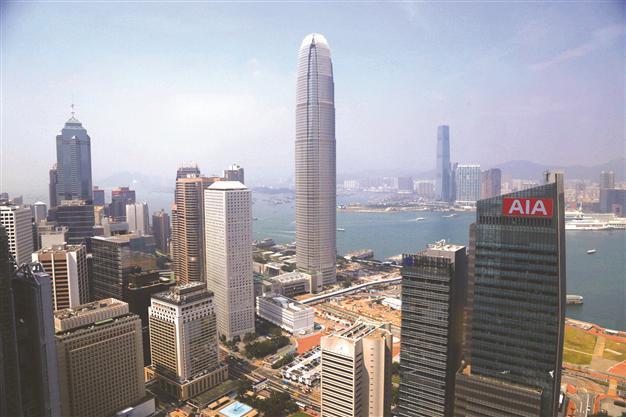Developing Asia able to ride out Fed’s tapering, says ADB
MANILA - Reuters

A general view of Hong Kong is seen. The Asian Development Bank reckons the Asia-Pacific region, grouping 45 countries, will grow by 6 percent in 2013 and 6.2 percent in 2014. AP photo
Asian economies can ride out the storm when the Federal Reserve finally begins ending years of easy money, with even those most at risk, India and Indonesia, holding enough currency reserves for rough times ahead, according to the Asian Development Bank.
The ADB reckoned the U.S. central bank would wait till early 2014 to slow its dollar printing presses, after the Fed surprised markets last month by leaving its $85 billion monthly bond buying program unchanged.
“We are anticipating that is something that would start early next year,” ADB assistant chief economist Joseph Zveglich told a news conference, adding that it was crucial that the Fed communicates its timeline for reducing the stimulus program.
Updating forecasts for 2013 and 2014, the Manila-based lender said on Wednesday that growth in developing Asia is likely to be slower than it thought three months ago, when it last revised forecasts to an annual outlook released in April.
It now reckons the region, grouping 45 countries in Asia-Pacific, will grow 6.0 percent in 2013 and 6.2 percent in 2014, little changed from last year’s growth of 6.1 percent.
Between May and August, emerging markets were gripped by a sell-off after the Fed signalled that it would taper its bond-buying stimulus once the U.S. economy improved. The sudden capital outflows caused some alarm, but ADB said worries over potential for a regional meltdown were misplaced.
A repeat of 1997 crisis“Fears of a repeat of the 1997 Asian financial crisis are unwarranted,” ADB said in a statement. “The region is now in a stronger position to weather the storm, with many economies running current account surpluses and holding large foreign reserve stockpiles.”
The bank said developing Asia’s current account surplus is expected to narrow to 1.6 percent of GDP in both 2013 and 2014 from 1.8 percent last year.
Whereas high external deficits resulted in India and Indonesia suffering far sharper falls in their currencies during the emerging markets’ sell-off, ADB took comfort in their levels of reserves.
“Widening current account deficits have long made both economies more susceptible to shifts in market sentiment, as have fiscal deficits in India. Fortunately, both have sufficient foreign exchange reserves, enough as of August to cover imports to India for 7 months and to Indonesia for 5 months,” ADB said.
With inflation generally subdued, Zveglich did not expect central banks in Asia to tighten monetary policy to slow a potential exodus of capital when the tapering begins.
Need for reformsChina is expected to grow 7.6 percent and 7.4 percent this year and the next, ADB said, trimming its July forecasts of 7.7 percent and 7.5 percent respectively.
The slowdown in the world’s second biggest economy may usher in a more sustainable growth path as Chinese authorities seek a balanced development strategy away from its previous export- and investment-led growth model, the bank said.
ADB made significant downward revisions to 2013 and 2014 growth forecasts for India, Indonesia, Malaysia and Thailand.
India is expected to expand 4.7 percent and 5.7 percent this year. The Philippines is expected to grow 7 percent this year against an April forecast of 6 percent. ADB also said inflation in Asia is likely to remain subdued this year and next, but some countries were likely to see mounting price pressures.
